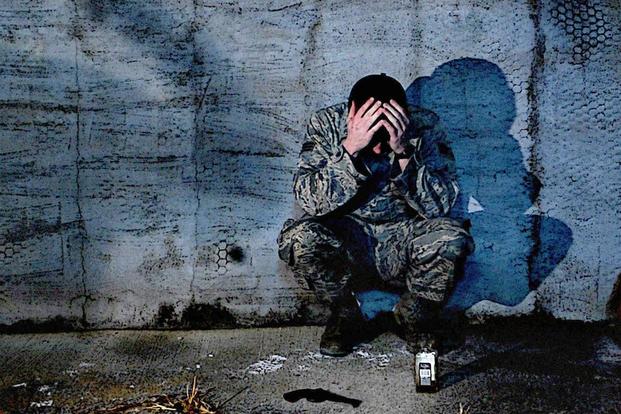
According to newly released Pentagon data, suicides among active-duty military personnel increased in the first three months of 2023 compared to the same period last year. According to the Defense Suicide Prevention Office’s quarterly report, the aggregate number of active-duty suicides — 94 — from January to March was up 25% compared to the 75 personnel who committed suicide in the first three months of 2022. “Every death by suicide is a tragedy,” according to the report. “Data includes all known or suspected suicides (both confirmed and pending) as of March 31, 2023.”
Suicide deaths in the Army increased the most, from 37 to 49. The Marine Corps grew from eight to fourteen. (ausoma.org) According to the Defense Department data, the Air Force had one more suicide than in 2022, while the Navy and Space Force had no change. The 94 active-duty suicides are the greatest since the military reported 97 in the second quarter of 2021. According to the data, suicide rates among reserve troops and the National Guard did not vary between the first quarter of 2022 and the same period this year. Military suicides have increased over the last decade, with a big spike in 2020 during the coronavirus pandemic, according to Pentagon data, and the Defense Department has spent millions of dollars on measures to prevent them.
Brandon Act passed to improve mental health services for troops
The Department of Defense passed the long-awaited Brandon Act in May, allowing troops to seek confidential mental health services at any time. It is named after Brandon Caserta, a Navy Petty Officer 3rd Class who committed suicide in 2018. According to Defense Department statistics, there were over 29 suicides per 100,000 servicemen in 2020, up from 17.5 in 2010. This ratio reduced to 24.3 per 100,000 in 2021, although it still indicated a significant increase in suicides when compared to the majority of the 2000s and 2010s.
“There is still a gradual increasing trend for suicide in the military over a 10-year period, and we need to see a sustained long-term reduction in suicide rates to know if we’re really making progress,” Beth Foster, executive director of the Pentagon’s Force Resiliency Office, said when the 2021 Annual Report on Suicide in the Military came out in the fall.
A Pentagon task team established the Defense Suicide Prevention Office in 2011 to research more effective suicide prevention strategies. After a year of research, the Pentagon’s Suicide Prevention and Response Independent Review Committee issued several recommendations earlier this year, including restricting troops’ access to firearms, imposing waiting periods for gun and ammunition purchases, and raising the minimum age for purchasing both to 25. According to the Defense Department, firearms are used in around two-thirds of all active-duty military suicides. The recommendations are being reviewed by the Pentagon.
Preliminary military suicide report delayed, caution urged in interpreting data
The second quarter concluded on June 30, and the Defense Suicide Prevention Office typically does not release an updated suicide report for that period until October. The Pentagon’s annual comprehensive research on military suicides is likewise usually released in October. This year’s will look at 2022.
“The numbers presented in this report are preliminary and subject to change as previously unknown suicide cases are reported and some known cases are further investigated,” the four-page report states. “Caution should be used when making comparisons across groups and/or interpreting changes in suicide counts across time.”
In addition to Pentagon-wide programs, each military service maintains its own suicide prevention program to assist distressed members. Furthermore, last year, the national suicide prevention hotline was streamlined and became accessible by dialing 988. Callers can reach the Veterans Crisis Line by pressing “1” after dialing the number. For assistance, service members and veterans can also text 838255 or go to VeteransCrisisLine.net.
